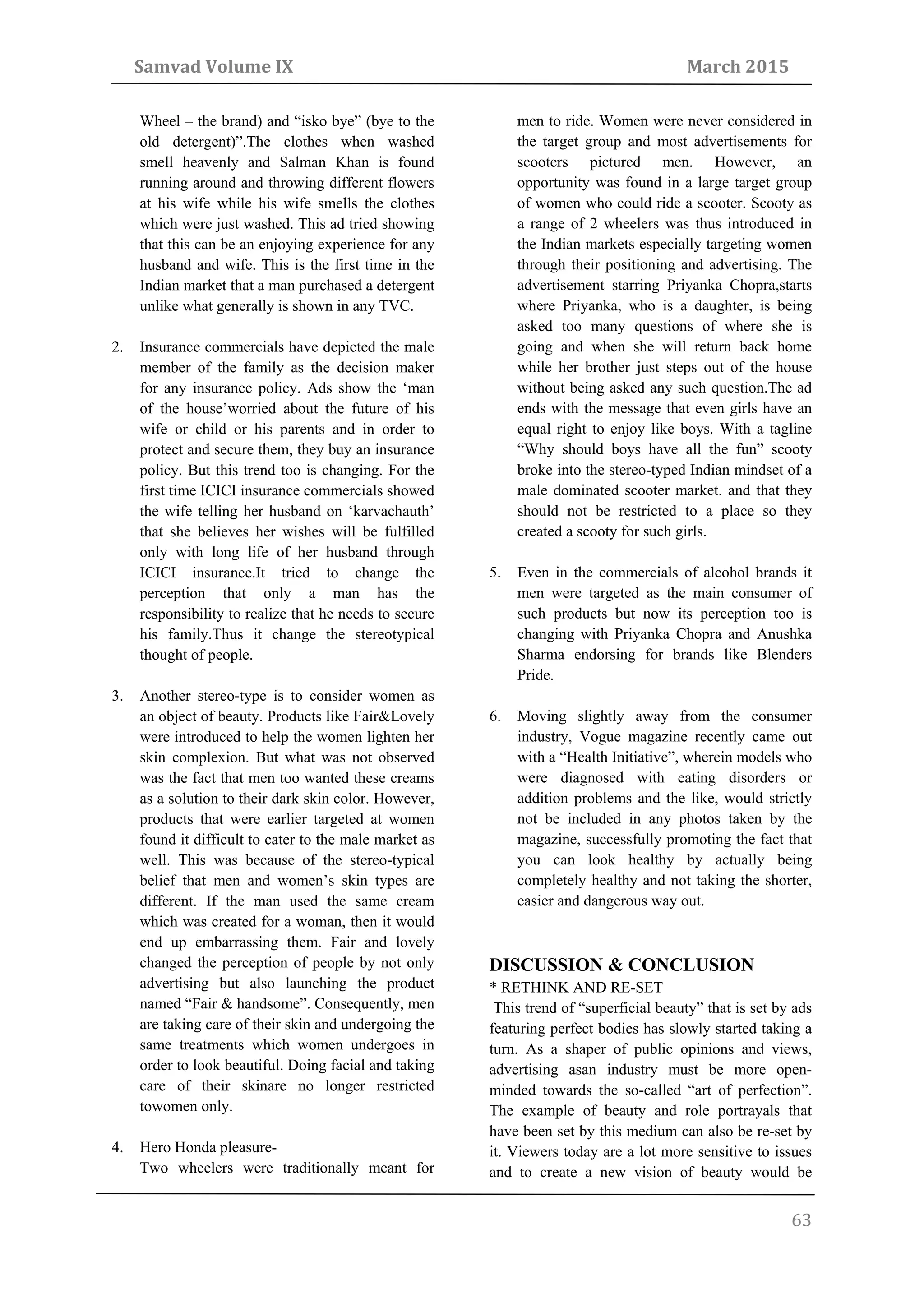This document summarizes a study on gender stereotyping in Indian advertising and its effects. It discusses how men and women process advertising differently, with women taking a more evaluative approach. It also describes common gender stereotypes used in Indian ads, such as portraying women's beauty and roles in a limited way. The study aims to understand how stereotypes affect the audience and whether more positive portrayals could benefit advertisers and consumers. Humor is discussed as a tool that can sometimes reduce negative reactions to stereotypes.





